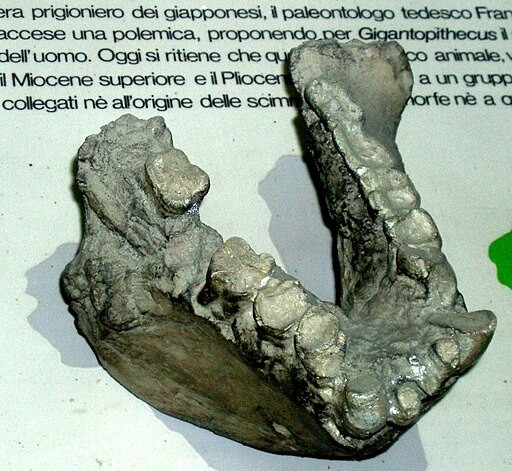For two million years, the jungles of modern-day southern China have been inhabited by a 10-foot (3-meter) tall ape weighing about 551 pounds (250 kilograms). Also known as Gigantopithecus blacki, these distant primate relatives went extinct before the arrival of humans in the region, leaving only 2,000 fossilized teeth and four jawbones as the only evidence of their existence.

Solving the Long-Standing Mystery
The extinction of G. blacki is an enigma in paleontology, leaving questions about how a mighty creature went extinct when other primates adapted and survived. A team of US, Australian, and Chinese scientists worked together to solve this mystery using new evidence from southern China. Their findings were discussed in the paper "The demise of the giant ape Gigantopithecus blacki."
The Institute of Vertebrate Paleontology and Palaeoanthropology (IVPP) at the Chinese Academy of Sciences has excavated G. blacki, which has remained in this region for over a decade. However, the cause of its extinction has eluded scientists due to a lack of solid dating and consistent environmental analysis.
In a recent study, experts conducted a large-scale project involving the collection of evidence from 22 cave sites across Guangxi Province in southern China. It aims to present a defined cause for the extinction of a species while establishing the exact time when it disappears. This provides a target timeframe for an environmental reconstruction and behavior assessment.
Six Australian universities contributed to the success of this project. Southern Cross University, the University of Queensland, Macquarie University, and Wollongong University used multiple techniques to date samples. Southern Cross also extracted information on the ape's behavior by mapping G. blacki teeth. Meanwhile, the Australian National University and Flinders University studied the pollen and fossil-bearing sediments in the cave to reconstruct the environments in which the giant ape thrived and disappeared.
The sediments and fossils in the cave underwent six different dating techniques, which produced 157 radiometric ages. These were integrated into eight sources of environmental and behavioral evidence. They were also applied to 11 caves containing evidence of giant apes and 11 caves of similar age range where no G. blacki evidence was found.
The primary technique used by the research team was luminescence dating. This method measures a light-sensitive signal in the burial sediments that encased the giant ape fossils. This approach was supported by uranium-series (US) and electron-spin resonance (US-ESR) dating of the giant ape teeth.
READ ALSO : The World's Primates at Risk of Extinction Due to Global Commodities Trade and Consumption
Cause of Species Demise
The study results reveal that G. blacki went extinct between 295,000 and 215,000 years ago, much earlier than previously thought. Before this time, G. blacki flourished in a rich and diverse forest in China. By 700,000 to 600,000 years ago, the environment became more unsteady due to the increase in the season's strength, resulting in a change in the structure of the forest communities.
Orangutans, a close relative of the giant ape, adapted their size, behavior, and habitat preferences as the environmental conditions changed. Meanwhile, G. blacki relied on a less nutritious backup food source when its preferences were unavailable. As the diversity of its food decreased, the giant ape became less mobile, with a reduced geographic range for foraging. Their species faced chronic stress, which led to a reduction in their population.
RELATED ARTICLE : Prehistoric Primates Likely Lived in Pairs; How Did It Affect the Evolution of Social Organizations in Humans?
Check out more news and information on Primates in Science Times.
© 2026 ScienceTimes.com All rights reserved. Do not reproduce without permission. The window to the world of Science Times.











